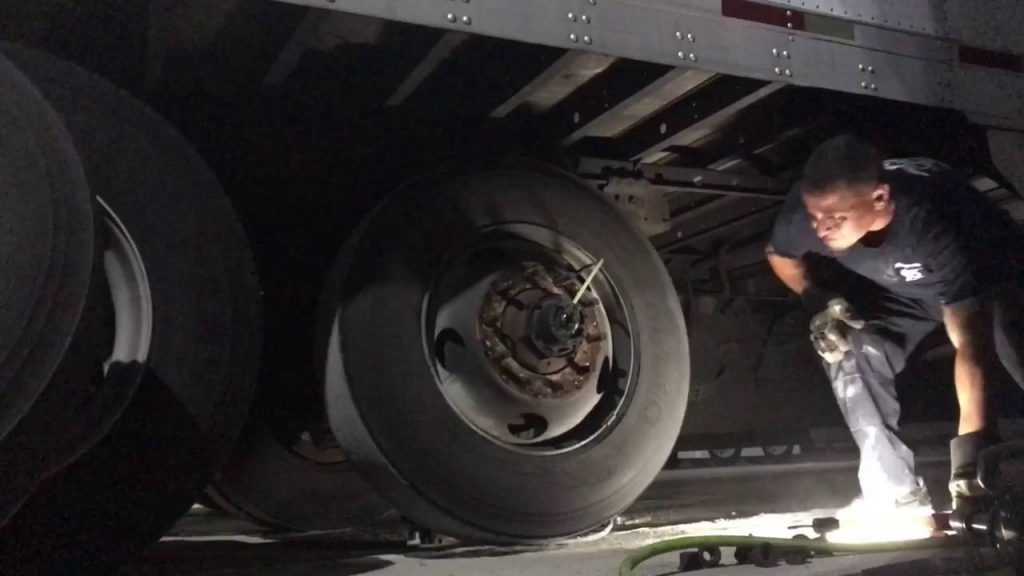Have you ever wondered why semi-trucks have so many tires? The fact that almost all of them have exactly 18 wheels has always been a mystery to me. I did some research to figure out why this is the case, and I’ll explain it all in this article. I’m going to explain why 18-wheelers have so many tires.
Semi-trucks need more tires because they’re carrying a lot of weight over long distances. The additional tires help distribute the weight so the tires blow out less often. It also helps the rig stay stable, prevent flipping due to a weight shift, and allow the semi to go off-road as needed.
A semi-truck can go by a few different names: 18-wheelers, big rig, or tractor-trailer. Despite the different options, they’re all referring to the same type of vehicle.
A semi-truck is a large, long vehicle used specifically for commercial freight hauling. They have a comparably short “truck tractor” then a long box-looking piece on wheels behind the cabin, called the “semitrailer”.
To make things simple, people call the front the “tractor” and the rear the “trailer”. Put it together, and you get a tractor-trailer.
That’s right, these two parts are completely separate. The tractor has the engine in it and drives the rest of the vehicle. It also has the sleeper cabin where the trucker is positioned all day.
The long trailer is connected to the rear of the tractor and is loaded and offloaded as the trucker picks up and delivers the cargo. You can think of it like a trailer you pull behind your pickup and latch into the hitch.
Inside the container, there could be just about anything. It could be filled with stuffed animals, furniture, or art.
There is a federal weight limit of 80,000 pounds of gross weight that can go into the trailer.
The truck will take cargo from one area of the country to another. Your computer monitor could have been made in Ohio but sold in Washington state. At some point, a semi-truck might have had a whole load of monitors that they took across the country to be sold.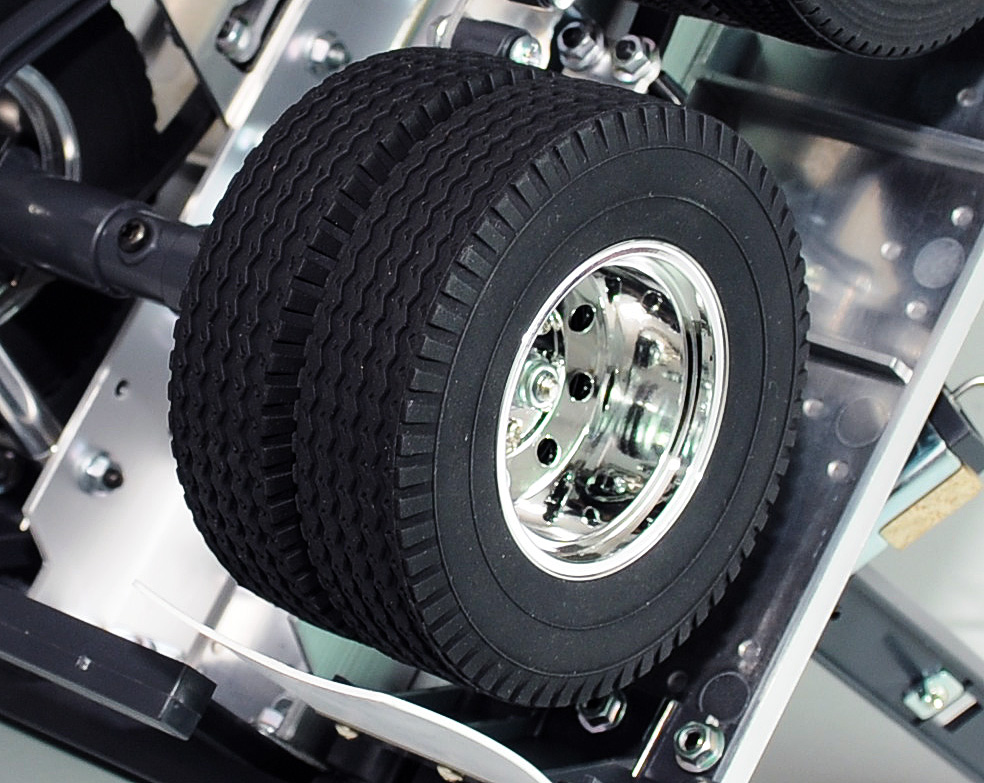
I just want to be clear that these are completely different from pickup trucks. I’ve had friends loosely use the term “truck” to talk about these two vehicles interchangeably. Instead, you should use the terms “semi” and “pickup”.
If you look at the base of the 18-wheeler, you’ll see a ton of tires. If you’re a math whiz, you might count 18 of them.
This isn’t universally true. The semis can have either 10, 18, 26, or 34 tires. A standard 18-wheeler is set up like this, moving from the front to the rear:
Add them together and you get 18. Swap out the four-wheel axles with two-wheel axles to get 10. Take a semi and add 2 or 5 more axles and you’ll get 26 or 34 tires, respectively.
Swap out the four-wheel axles with two-wheel axles to get 10. Take a semi and add 2 or 5 more axles and you’ll get 26 or 34 tires, respectively.
Why is there so much variability and what’s the need for so many tires in the first place? It has to do with carrying the load safely from one point to the next.
The first role is to physically carry the weight of the vehicle. When the trailer is loaded, the weight is transferred directly into the tires and down to the road.
If the tires aren’t strong enough to support the weight of the semi-truck, they’ll pop. One way to prevent this is to make bigger, stronger, more expensive tires. Still, they can only handle so much weight.
Another way to do this is to use a number of tires. By having 18 tires working together, the weight is distributed 18 ways.
The U.S. Department of Transportation (DoT) has standards when it comes to loading semi-truck. Specifically, they only allow 12,000 pounds for the steering axle, 20,000 pounds per individual axle, and 34,000 pounds for tandem axles.
Specifically, they only allow 12,000 pounds for the steering axle, 20,000 pounds per individual axle, and 34,000 pounds for tandem axles.
Using fewer axles means that a truck can legally carry less weight. This forces the driver to take less product on each trip, making less money.
When it comes to over-the-road trucking, blowouts are inevitable. Tire blowouts are caused by too much weight or pressure on a tire that has some failure. A tiny fracture on a tire can lead to a blowout under the right conditions.
By doubling up the tires on each side of the semi, the driver can save their 18-wheeler during a tire blowout. The other tire next to the blown one will allow the vehicle to hobble to safety on the side of the road and repair the blown tire.
Even if the laws didn’t exist and blowouts were ignored, the semi-truck still needs to be stable. These vehicles are driven hundreds of thousands of miles at highway speeds. Instability means the truck will either spin out or flip over easily.
Instability means the truck will either spin out or flip over easily.
With all these extra axles and tires, you’re left with a vehicle that’s highly stable. Compare riding a tricycle to a bicycle to a unicycle. As you have more tires in contact with the ground, you have an easier time balancing.
If semi-trucks only had a set of tires in the very front and back, you would see them on their sides constantly, especially as they’re making turns.
There are plenty of times when a big rig driver has to take things off-road. In more remote areas of the country, paved roads are a luxury.
This is when it helps to have so many tires. The semi can still balance on unpaved roads, support the weight of the load, and get through the trip.
There are no laws surrounding how the cargo needs to be secured within the trailer. Things can be stacked and piled on top of one another, creating a mountain of goods.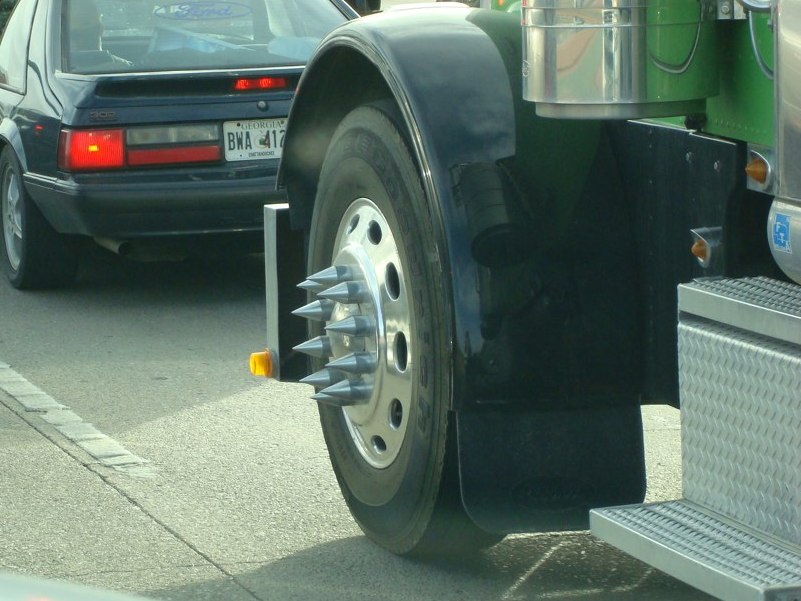
When the semi makes a turn or needs to quickly correct their vehicle, it can result in the weight shifting within the trailer. It might not seem like a big deal, but shifting weight is a huge problem.
If you take a standard pickup truck and suddenly shift the weight in its bed to one side, it’s likely that the pickup will have two wheels off the road and can flip.
Weight shifts can be very common with 18-wheelers. Thankfully, they have plenty of wheels to keep the semi-truck planted whenever this happens. As a result, the rig can stay balanced even when the cargo shifts around.
You might also see some semi-trucks that have a set of tires just floating over the ground. No, these aren’t the spare tires for the vehicle, this is a “drop axle”.
As you know, more tires equate to more allowable weight for the semi-truck. The trade-off is that the vehicle is less maneuverable. This means taking larger turns, getting a worsened fuel economy and more difficulty driving through parking lots.
To make semi-trucks easier to drive, they install these drop axles. When the axle is up and in the “stored” position, those four wheels aren’t touching the ground. In this position, the semi has the best maneuverability.
If the load is too heavy, then the driver will drop the axle and it will make contact with the road.
In other words, the driver can decide whether they want 18 or 14 wheels in contact with the road by raising or lowering this axle.
Since the law sets the weight limit based on how many axles are in contact with the road, the driver still needs to adhere to those standards.
The next time you pass an 18-wheeler with an axle in the air, know that their cargo is lighter and they’re choosing a more maneuverable rig.
In theory, it makes sense why semi-trucks have so many tires (per the reasons I listed in a previous section). But, why do they have exactly 18? Would a truck flip with 16 and refuse to turn with 20?
There’s no reason why there need to be exactly 18 tires.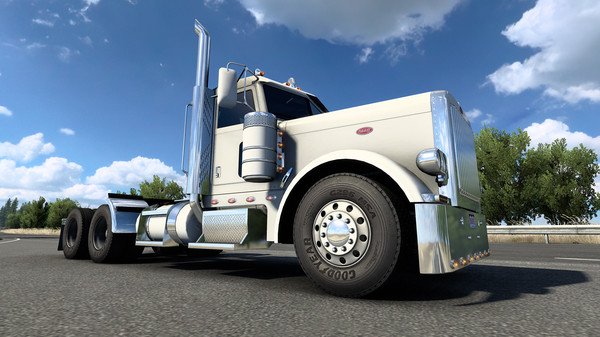 The best explanation is that the number 18 just stuck. Having a set of axles at the front and rear of the trailer makes sense, so 18 would be the logical outcome.
The best explanation is that the number 18 just stuck. Having a set of axles at the front and rear of the trailer makes sense, so 18 would be the logical outcome.
Plus, 18 seems to give a good combination of maneuverability and strength. It’s worked for this long, so why change it now?
To be clear, there are no laws or standards forcing these tractor-trailers to have 18 wheels. Just the axle law explained earlier, but that doesn’t limit you to only 5 axles.
In this article, I discussed why semi-trucks have so many tires. It keeps the rigs more stable and allows them to carry plenty of weight. If you have more automotive questions, you might find the answer on my site. Be sure to see what products I recommend that will make your life easier as a car owner.
Your subscription could not be saved. Please try again.
Welcome to Motor Hills!
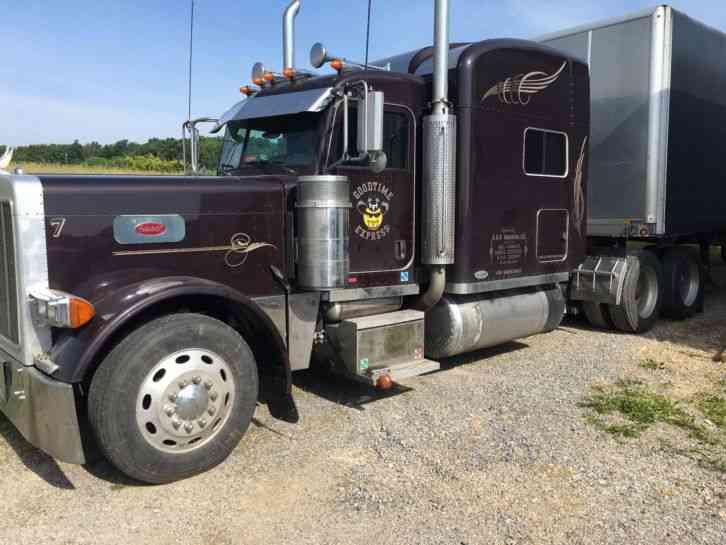 com
comSemi trucks have many wheels. However, this varies greatly on the weight being hauled and the class of the vehicle.
In this article, we explain how many wheels do the various types of semi trucks have.
Read on to find out more…
A semi-truck will typically have either 6 or 10 wheels. A heavy-duty tractor unit will have 10 wheels, with 2 steer wheels on the front axle and 4 wheels on both of the rear axles. A medium-duty tractor unit will have 6 wheels, 2 steer wheels on the front axle, and 4 wheels on a single rear axle.
Table of Contents
The number of wheels on an 18 wheeler usually corresponds to the number of rims on the semi truck.
18 wheelers usually have 18 rims and each has a tire. This means that most 18 wheelers also have 18 wheels.
This doesn’t look the same as it would on a regular car, however.
Usually on either side of the front of the tractor are 2 wheels (so 4 on either side of the front of the tractor) with the back set of wheels having 10 total on the tractor.
The double axle trailer has a total of 8 wheels with 2 wheels on either side of each axle. This means the trailer has 8, plus the 10 up on the tractor which equals to 18.
No, not all trucks have 18 wheels. It is true that 18 wheelers all have 18 wheels, but semi trucks come in many sizes.
The next size down from an 18 wheeler is the 16 wheeler.
The 16 wheeler is similar, but smaller, with a smaller engine, and of course 16 instead of 18 wheels.
The confusion arises in part because of the common use of the term 18 wheeler to refer to any semi truck.
However, the number of wheels a truck has will depend on how many axles it has and whether it has single-tire hubs or double-tire hubs. This applies to both the tractor unit and the trailer.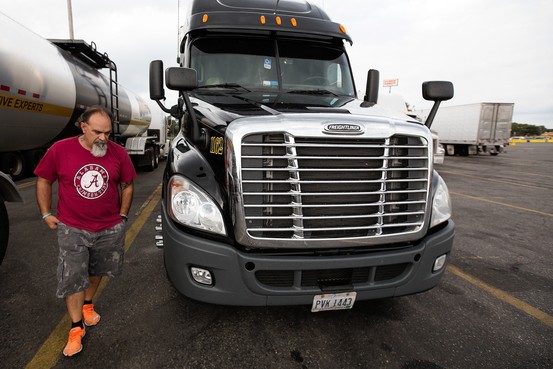
16 wheelers are uncommon, but they do exist.
18 wheelers only have 18 wheels and do not have fewer or more. But, semi trucks have fewer wheels to haul small loads and less weight.
A 16 wheeler semi truck may exist if you have a tractor unit having 10 wheels, similar to that of an 18 wheeler, and a trailer with a 6 wheel configuration.
A trailer with a 6 wheel configuration will typically consist of 3 axles with single-tire hubs, totaling 6 wheels.
These types of trailers are used for lighter loads and are most common in Europe.
Most semi trucks with a tractor and trailer configuration have 18 wheels, hence the ubiquitous name.
However, semi trucks can have fewer wheels and if extra trailers are being hauled, this will also increase the number of wheels the truck has.
A tractor unit typically has 6 or 10 wheels. A light-duty tractor unit has 6 wheels whilst a heavy-duty tractor unit will have typically have 10 wheels.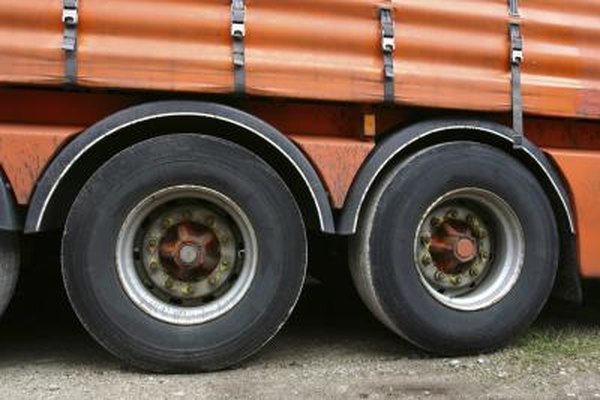
If a semi truck is hauling two trailers, each trailer can add an extra 4-12 wheels depending upon the rim set up.
Some semi truck rims are designed for two wheels each, while others only have one rim for one wheel.
A typical heavy-duty trailer in the U.S. has a double or tri-axle setup, both with double-tire hubs.
Therefore a double axle trailer will have 8 wheels and a tri-axle trailer will have 12 wheels in total.
These semi trucks will include primarily class 5-6 trucks. The trucks include vehicles such as box trucks, some moving trucks, and delivery trucks.
Some smaller, lighter-duty semi trucks can have as little as 6 wheels. These typically have a single rimmed wheel and a smaller trailer.
A medium-duty tractor like the Kenworth T270 and T370 has 6 wheels, 2 as the front steer tires, and 4 wheels in the rear axle.
The heavy-duty semi trucks are when the rims of their wheels usually support more than one tire.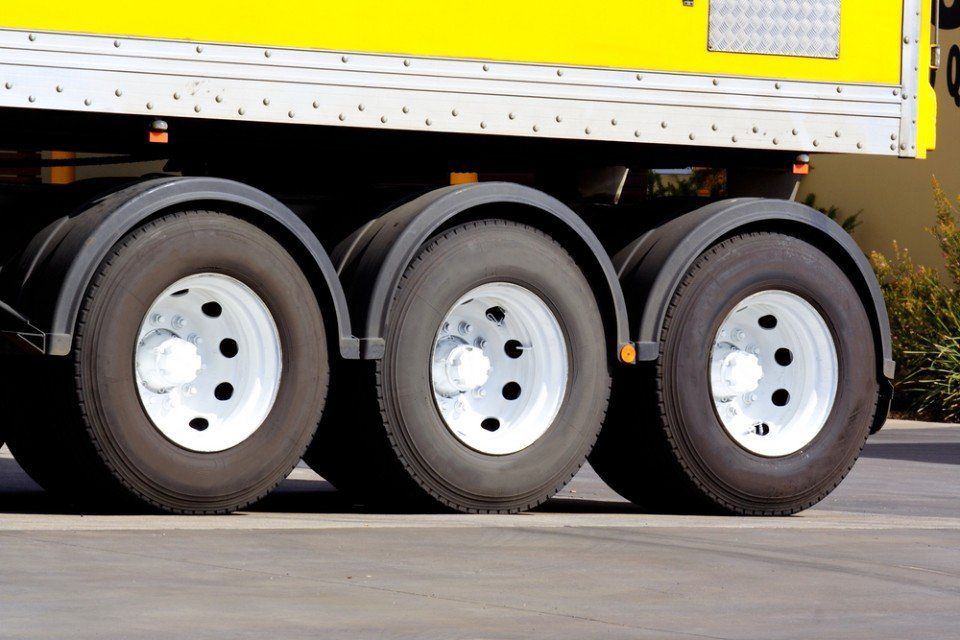
This is when you will start to see the class 7-9 semi trucks with 18 wheels.
This class, as stated above, includes the large to oversized load semi trucks. Class 7 can include some street cleaning trucks and garbage trucks which are large and typically have 10 wheels.
A heavy-duty tractor like the Peterbilt 389 will have 10 wheels, 2 as the front steer tires, and 8 wheels in the 2 rear axles.
Together with a trailer, it can add up to 6 – 24 wheels, depending on the number of axles per trailer and of course whether it utilizes single-tire or double-tire hubs.
The larger semi trucks with a single trailer have between 16-18 wheels for the trucks registered for up to 30,000 pounds and up to three axles.
Oversized loads may have an extra row of double tires in the back of the trailer, thus making the total 20-24 wheels.
The 6×2 semi trucks typically have 6 wheels.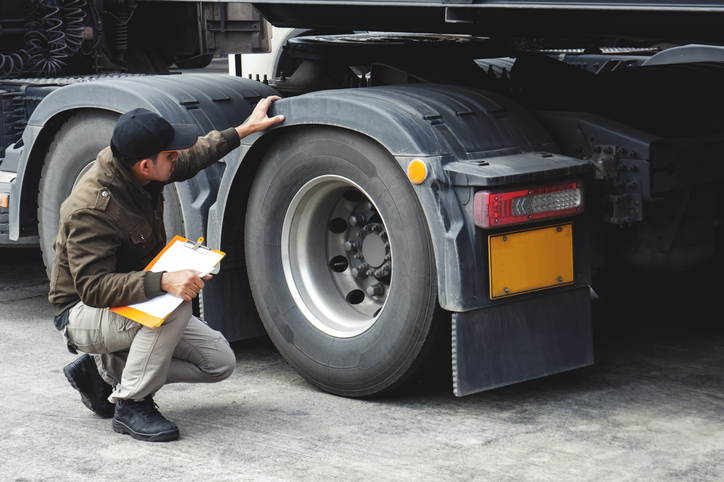 2 steer wheels on the front axles and 4 wheels on the rear drive axles.
2 steer wheels on the front axles and 4 wheels on the rear drive axles.
The 6×2 semi trucks essentially mean that the two of the rear-drive axles get powered. For this reason, it is better suited for class 6 vehicles that do not haul as much weight.
These are more popular in Europe but have been gaining traction in the U.S.
One of the main appeals of this design is it saves fuel, but also delivers less power so be sure you know your routes before making your choice.
The 6×4 semi trucks typically have 10 wheels. 2 steer wheels on the front axles and 4 wheels each on the 2 sets of rear drive axles.
Similar to the answer above, 6×4 essentially means of the 4 of the rear axles are being powered which makes it the drive axles. For they are more powerful than 6×2.
These semi trucks use much more fuel than the European styled 6×2, but it is preferred by drivers who travel in rough terrain.
Typically, 18 wheelers use 6×4 wheel drive, which means usually they have 18 wheels total.
The 6×6 semi trucks typically have 10 wheels. 2 steer wheels on the front axles and 4 wheels each on the 2 sets of rear drive axles.
All 3 sets of axles are powered i.e. 6 axles in total.
The 6×6 semi truck is sometimes called all-wheel drive. For small cars this is known as 4×4 all wheel drive, but since there are more wheels on a semi truck, it is 6×6.
Usually, these trucks are not used for commercial use. Rather, it is reserved for military vehicles such as tanks and off-road all-terrain vehicles.
The maximum number of wheels in a standard truck is 22. This truck will consist of a heavy-duty tractor unit with 10 wheels and a tri-axle trailer with dual-tire hubs having 12 wheels. However, semi trucks that haul oversized loads will have more wheels and must acquire special clearance.
Most semi trucks of the 7-8 class need to have double tires. This is due in part to the fact that these wheels operate with the 2-3 axles to get their power and balance the weight of the load.
For semi trucks weighing up to 80,000 pounds, you will definitely want to have the double tire in order to hold so much weight.
If you consider class 5-6, however, the weight is not so great that the wheels cannot hold it.
Typically, all semi trucks (especially the big rigs people have in mind) need the extra wheels. But, smaller models which carry less weight at once don’t need the support.
A typical tractor unit will have 3 sets of axels.
The front set of axles will have two steer wheels, one on either side.
The other 2 axles are considered as the drive axles and will have 2 wheels on either side of each axle.
The steer wheels are controlled by the steering wheel which is located in the driver’s cab.
One of the main reasons there are so many wheels on a semi truck is to balance the weight and ensure the weight is supported.
This prevents the pressure of up to 80,000 pounds from crushing the tires or causing them undue wear.
For this reason, the tire lifespan is actually extended by having support from the others.
Another reason is to keep the vehicle balanced when turning and traveling. There is a lot of weight that can cause the semi truck to tilt or fall if the wheels cannot hold the weight.
There are a lot of rules and regulations on semi truck weight limits that must be adhered to and can easily be unbalanced due to loads.
Most commonly these wheels are on dump trucks and garbage trucks which can very easily exceed the legal load limits.
But, these wheels are not always needed and thus can be raised when the weight limit isn’t being exceeded.
One reason it is good to have the option to raise the extra wheels is the more axles that are in use the less mobile your truck will be.
If more axles are being utilized it can make turning more difficult, so you don’t want to have them implemented unless needed.
This depends upon the type of truck you are thinking about.
Most big rig, 18 wheeler semi trucks do not carry spare tires with them or have the extra raised wheels seen on garbage and dump trucks.
The reason many big rigs do not carry spares with them is that it will upset the weight limit of the trailer.
Tractor-trailers need to be very careful they do not exceed weight limits when they enter the weigh station. Having a spare tire will add to the overall weight of the truck and make it more difficult to travel.
It is also far easier to have assistance rather than try to somehow change the semi truck’s tires on the highway without proper equipment.
All in all, semi trucks do not benefit from having any spare tires with them.
Garbage trucks and dump trucks can have as many as 3 extra sets which can be lowered and used, but typically only have 1-2 rows.
A truck tire is a complex technological product with a significant cost. The purchase of tires and their operation require considerable costs, so the choice of rubber must be approached very carefully.
There are 2 types of tires:
Bias and radial tires look very similar, but they are very different in design.
Bias truck tire carcass is made of multi-ply cord that acts as the skeleton of the tire. Cord threads of different layers are located at an angle of 35-40° to each other, that is, in a diagonal direction to the circumference of the truck tire.
In radial tires, the cords are tensioned at an angle of 90° to the circumference of the tire, that is, when viewed from the side of the truck tire, the cords are located in the radial direction from the center of the circumference of the tire.
In addition to the cord layout, there are several other differences:
Each of these types of tires has its own advantages.
1 — Bead ring. It is the base of any tire. In combination with the cord plies, it forms the tire carcass. The ring consists of a virtually non-stretch wire core. The bead ring provides reliable fastening of the tire on the rim, fixes its position and provides sealing.
It is the base of any tire. In combination with the cord plies, it forms the tire carcass. The ring consists of a virtually non-stretch wire core. The bead ring provides reliable fastening of the tire on the rim, fixes its position and provides sealing.
2 - Ply(s) of carcass cord. They perceive all loads: static from the car and cargo, braking, traction and steering forces. Cord layers, interconnected by rubber layers, together with the bead rings form the tire carcass.
3 — Cord lapel. This is the part of the cord layer that runs under the bead ring and ends on the sidewall of the tire
4 - Chafer. This is a fabric or steel layer that covers and protects the cord lapel. Its main function is to eliminate wear and friction between the bead and rim of the disc.
5 - Shoulder protector. This is a special triangular rubber layer located in the shoulder area of the tire that evens out the rounded shape of the carcass ply, making the tread area flatter.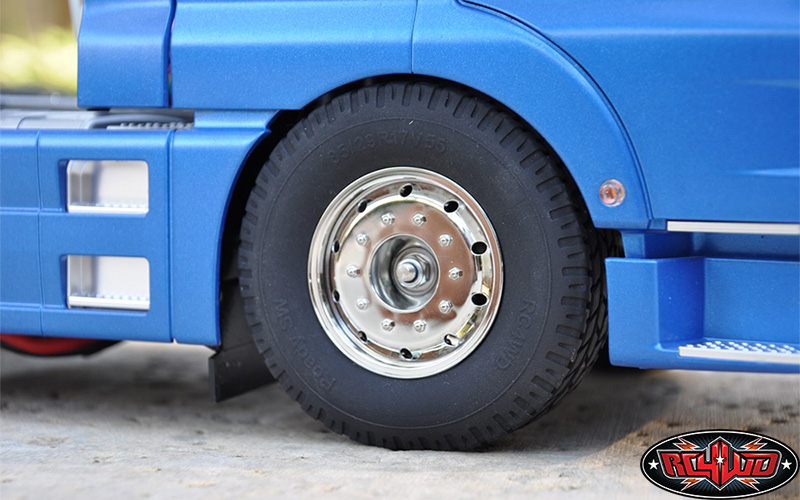 The undertread absorbs all the forces concentrated on the breaker edges.
The undertread absorbs all the forces concentrated on the breaker edges.
6 — Breaker package (stiffening belt). It consists of several layers of steel cord placed between the carcass and tread of the tire, which encircle the latter along the entire circumference. Adjacent layers of cord in the breaker are located at an intersecting angle to each other.
The breaker provides tire strength, stiffens the tread, protects the carcass from damage, promotes efficient transmission of forces through the tread, and evenly distributes the load on the tire surface.
7 - Protector. This is the outer covering of a profiled rubber tire that is in direct contact with the road. The tread provides the necessary grip on the road surface. It protects the carcass from damage, ensures the operational life of the tire until it is restored.
8 - Undertread. This is the boundary layer of tread rubber between the tire tread and the protective layer of the breaker pack.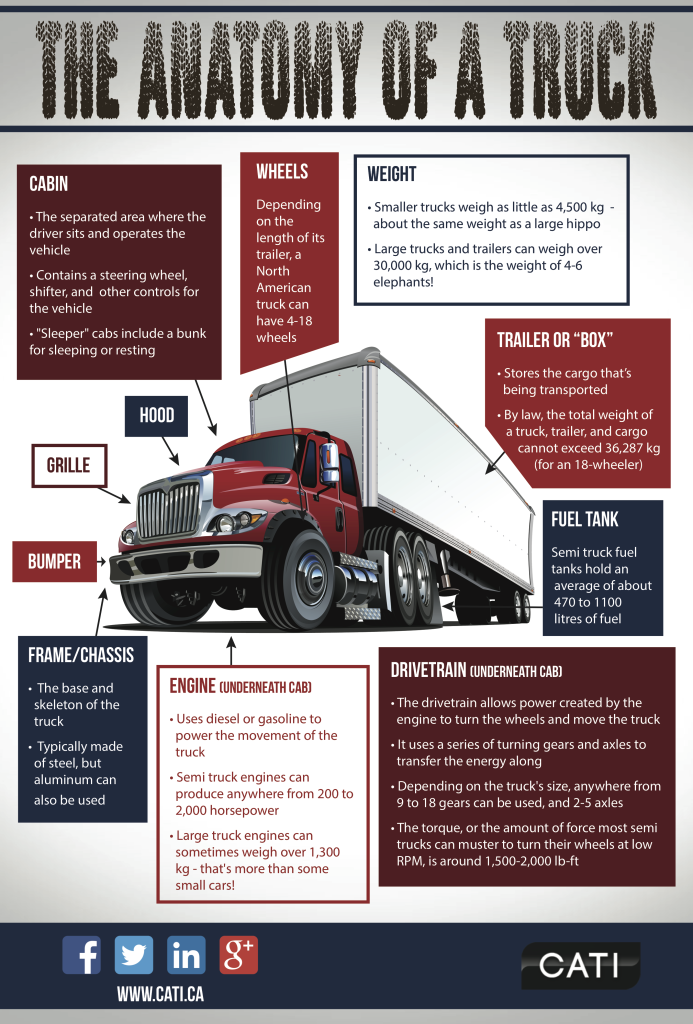 It provides the necessary tire protection. To reduce the heat capacity of a tire, manufacturers strive for a minimum thickness of the undertread layer.
It provides the necessary tire protection. To reduce the heat capacity of a tire, manufacturers strive for a minimum thickness of the undertread layer.
9 - Inner layer. A layer of rubber that protects the tire carcass from the inside and prevents air leakage in tubeless tyres.
On the sidewall of a truck tire, information about the applicability and design features of the tire is indicated. The ability to read this information correctly is important for anyone dealing with truck tires.
Figure 1-2: www.tidici.com
Figure 3: www.bridgestone.ru
Truck tires 385/65 R22.5 SUNFULL ST02
Delivery across Ukraine
14 190 UAH
Buy
Free delivery of truck and agricultural tires across Ukraine!
Truck tires 385/65 R22.5 LANVIGATOR Т706
Delivery across Ukraine
14 590 UAH
Buy
Free delivery of truck and agricultural tires in Ukraine!
Truck tires 385/65 R22.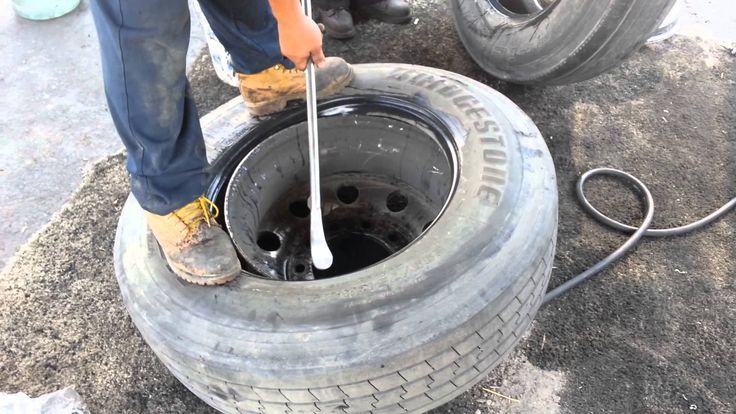 5 Lanvigator T706
5 Lanvigator T706
Delivery across Ukraine
14 790 UAH
Buy
Free delivery of truck and agricultural tires across Ukraine!
Truck tires 385/65 R22.5 Agate ST022
Delivery across Ukraine
14 590 UAH
Buy
Free delivery of truck and agricultural tires across Ukraine!
Tire 385/65 r22.5 T605 Lanvigator 9Ol000
rubber-lines
Tire 385/65 R22.5 STM313 Sunfull
in warehouse
Delivery in Ukraine
15 9000 UAH
Buy
Rubber
Shin 385/65 R22.5 S201 LANVIGATOR 9Ol000 Tire "
LONG MARCH 385/55R22.5 LM168
Delivery in Ukraine
13 500 UAH
Buy
LLC" Dr. Shina "
Cargo tires on the semi -propriet 385/65 R22.5 MIRAGE MG022 160K PR20 9 9 9
Inaccessible
14 500 UAH
Watch
Tires and Accessories for all types of equipment
B /'s tires for trucks and semi -trailers
Not available
1,500 UAH
View Auto -Shans+Autosyans+"
" Tire 385/55R22. 5 APLUS 160L T706
5 APLUS 160L T706
Not available
8 500 UAH
Watch
Tire South
Tire for a semi -trailer
FORECTION
Clarify
Watch
TOV "Auto Tyr Plus"-Rozborka napivorchep, metro Cherkasy
Shina 550/60-22.5 16PR for trailers and semi-traps, press collector
Not available
14 080 UAH
Watch
Reifen- UA
See also
215/65 R15C Barum Snovanis 3
Unavailable
4 656 UAH
Watch
🚛🚜 TRAKSH
Tire 385/65R22.5 160L T706 (APLUS) APLUS
APLIS0003
8 420 UAH
Watch
Tire South
Tire 600/50-22.5 16PR for trailers, semi-trailers and press colleagues
Not accessible
17 216 UAH
Reifen-UA
215/ 70 R15C Barum Snovanis 3
Not available
4 550 UAH
Watch
🚛🚜 TRAKSHINA.CR
LONG MARCH 385/65R22.5 LM267F
Unavailable?0002 LLC "Doctor Shina"
Tire 385/65R22.